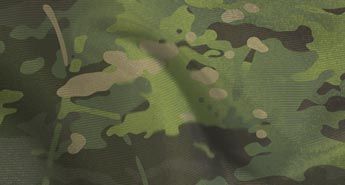Multicam® Tropic camo pattern
The MultiCam Tropic™ camouflage pattern was specifically developed to significantly reduce both the conspicuous visual aspect of its wearer and the Near-IR signature. As its name suggests, it is by far the most suitable camouflage pattern for dense jungles or other areas where dominant green, vibrant vegetation remains unaffected by usual seasonal changes.

Country of Deployment: This camouflage pattern originates from the private company MultiCam®, so anyone who desires it can have it. However, it has also attracted the attention of some armies – most recently, primarily the US Army, where one of this series’ camouflage patterns (the classic MultiCam®) served well as a universal camouflage in Afghanistan.
Since the camouflage pattern MultiCam Tropic™ is complementary to the traditional “main” camouflage pattern MultiCam®. This naturally means that when paired in any way, they will still complement each other well and provide coverage everywhere. Therefore, you need not be afraid to mix them however you find suitable/necessary.
What is a Near-IR signature and how does it help the army in detecting individuals?
When discussing “Near-IR” technology and the “Near-IR signature”, there are a few terms we need to define. The abbreviation “NIRS” is commonly used today. It denotes the term: “Near-Infrared Spectroscopy”. And even though looking at its wavelengths makes it clear to everyone immediately, we will remind you for completeness – it is a spectroscopic method using ranges between 2500 nm and 800 nm. This method is often preferred today because it achieves better results compared to other methods (specifically: mid-infrared spectroscopy).
Near-IR spectroscopy is not a remarkably sensitive method, but there are certain other advantages that have garnered its enthusiasts. For instance, the sample being examined does not have to be prepared, dried, diluted, etc., in a complicated manner. It is already being extensively used today in many areas: on the first position is surely modern medical diagnostics (blood sugar level, oximetry, …), and it is also employed in agrochemistry, pharmacy, in systems and technologies used in food control, as well as in research related to the combustion of substances. It is practical that Near-IR detectors can be very small, even tiny.
It is also potentially less harmful to the brains of newborns compared to other methods like fMRI and PET.






































































































































